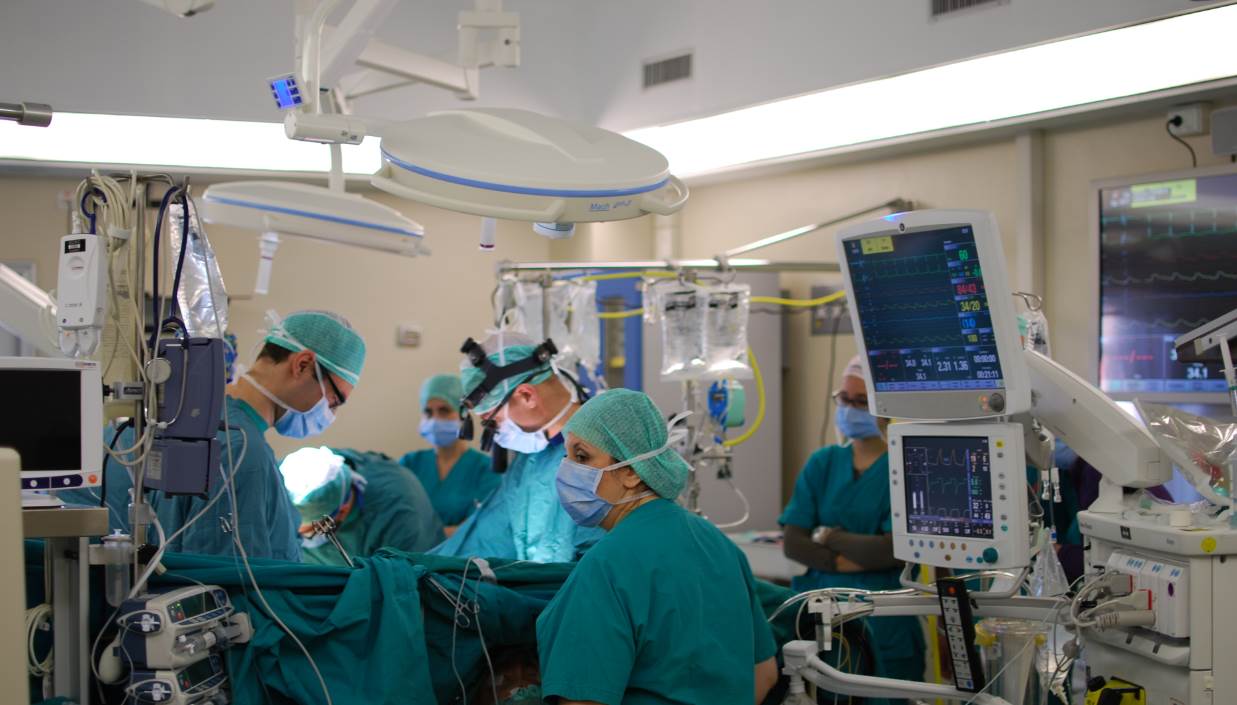What are the symptoms of a sacral dimple?
A sacral dimple is a small indentation or pit in the skin on the lower back, just above the crease of the buttocks. Most sacral dimples are harmless and asymptomatic, but some may be associated with underlying spinal or other abnormalities, depending on their characteristics. Here are the possible symptoms or features of a sacral dimple:
- Visible Dimple: The primary sign is the presence of a small, shallow indentation in the skin at the base of the spine, just above the buttocks. This dimple is usually present at birth and may be noticed during a newborn’s physical examination.
- No Symptoms: In most cases, a sacral dimple causes no symptoms and does not lead to any health issues. These dimples are often isolated findings and are simply a normal variation in skin anatomy.
- Deep or Large Dimple: If the dimple is deep, large, or located higher on the back, it may be associated with a higher risk of underlying issues.
- Hairy Patch: Sometimes, a sacral dimple may be accompanied by a tuft of hair, which can be a sign of an underlying spinal abnormality.
- Skin Discoloration or Birthmark: The dimple may be surrounded by discolored skin or a birthmark.
- Drainage: If the dimple is connected to a sinus tract (a small channel that can extend deeper into the body), there may be drainage of fluid, which could indicate an infection or other complication.
- Signs of Spinal Abnormalities: In rare cases, if the sacral dimple is associated with spinal abnormalities (such as spina bifida occulta or tethered cord syndrome), symptoms may include:
- Weakness or numbness in the legs.
- Difficulty with bowel or bladder control.
- Abnormalities in leg movement or development.
If a sacral dimple is noted to be deep, large, or associated with other unusual features, further medical evaluation, such as imaging studies (e.g., ultrasound or MRI), may be recommended to rule out any underlying issues. However, in most cases, sacral dimples are benign and require no treatment.
What are the causes of a sacral dimple?
A sacral dimple is typically a congenital condition, meaning it is present at birth. The exact cause of a sacral dimple is not always clear, but it is believed to result from a minor abnormality during fetal development. Here are some potential causes or factors associated with sacral dimples:
- Incomplete Closure of the Neural Tube: During early fetal development, the neural tube forms the brain and spinal cord. In some cases, a sacral dimple may occur due to incomplete closure of the neural tube. This is often a minor and isolated issue, but in rare instances, it can be associated with spinal abnormalities such as spina bifida occulta.
- Genetic Factors: Some sacral dimples may be linked to genetic factors, although they are usually isolated findings and not associated with any hereditary condition.
- Minor Skin Abnormality: A sacral dimple can also be a minor skin abnormality that occurs during the development of the skin and underlying tissues in the lower back.
- Tethered Cord Syndrome: In rare cases, a sacral dimple may be a sign of tethered cord syndrome, a condition where the spinal cord is abnormally attached to the surrounding tissues, restricting its movement. This can lead to neurological symptoms if left untreated.
Most sacral dimples are harmless and not associated with any underlying conditions. However, if the dimple is deep, large, or accompanied by other unusual features such as a tuft of hair, skin discoloration, or drainage, further evaluation may be necessary to rule out associated spinal abnormalities.
What is the treatment for a sacral dimple?
The treatment for a sacral dimple depends on whether it is an isolated finding or associated with an underlying condition. Here’s how sacral dimples are generally managed:
Isolated Sacral Dimple:
Most sacral dimples are simple, shallow, and harmless. If the dimple is small and not associated with any other symptoms or abnormalities, no treatment is necessary. These dimples are usually just a variation in skin anatomy and do not cause any health problems.
Evaluation and Monitoring:
In some cases, particularly if the dimple is deep, large, or accompanied by other unusual features (such as a tuft of hair, skin discoloration, or drainage), further evaluation may be recommended. This can include imaging studies like an ultrasound or MRI to check for any underlying spinal or neurological abnormalities. If these studies are normal, no further treatment is needed, but regular monitoring may be suggested to ensure no issues arise as the child grows.
Treatment of Associated Conditions:
If the sacral dimple is associated with a more serious condition, such as tethered cord syndrome or spina bifida occulta, treatment may be required. This could involve:
- Surgical Intervention: In cases where there is an underlying spinal abnormality, surgery may be necessary to correct the issue. For example, in tethered cord syndrome, surgery might be performed to release the spinal cord to prevent or alleviate neurological symptoms.
- Antibiotics or Drainage: If the dimple is associated with a sinus tract that becomes infected, antibiotics or surgical drainage may be needed to treat the infection and prevent further complications.
Hygiene:
For all sacral dimples, keeping the area clean and dry is important to prevent infections, especially if there is any discharge or if the dimple is deep.
In summary, most sacral dimples do not require any treatment and are simply monitored. However, if the dimple is associated with other symptoms or abnormalities, further evaluation and potentially treatment may be necessary.

Leave a Reply
You must be logged in to post a comment.